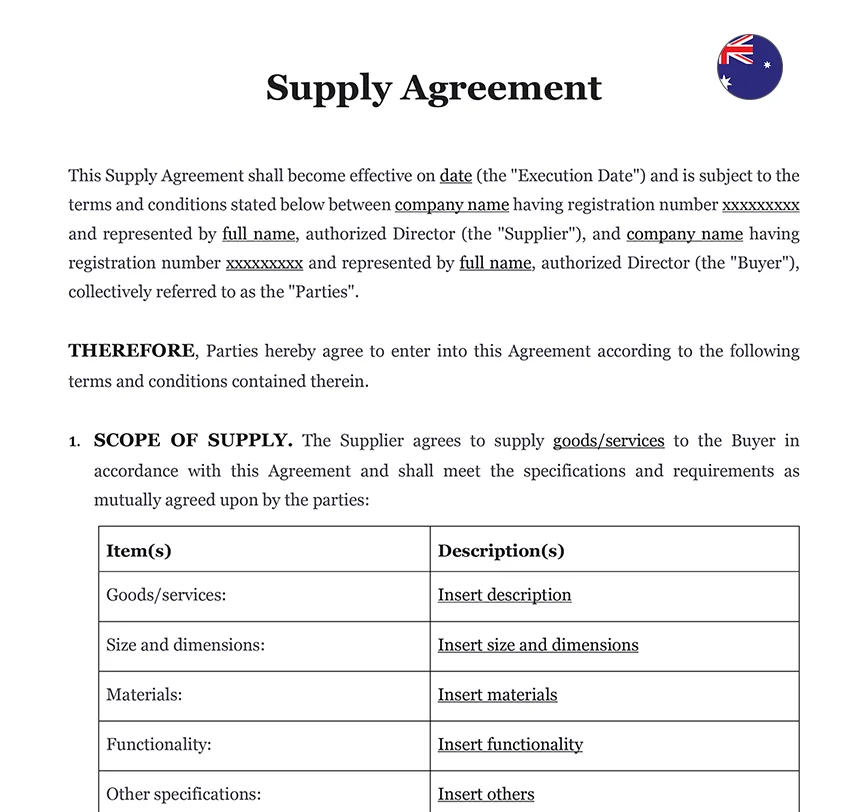Ready to use legal template
Drafted by experienced lawyers
Compliant with Australian law
Ready to use legal template
Drafted by lawyers
Compliant with Australian law
Home › Business contracts › Supply Agreement
Learn more about Supply Agreement in Australia
A supply agreement, also known as a procurement contract or purchase agreement, is a legally binding contract between a supplier and a buyer that outlines the terms and conditions of the supply of goods or services. It specifies the obligations, responsibilities, and rights of both parties regarding the purchase, delivery, quality standards, pricing, payment terms, and other relevant terms related to the supply of goods or services.Our easy-to-edit templates streamline the document preparation process, ensuring that you have professionally crafted documents at your fingertips, ready to be customized to your unique needs.
Table of contents
-
What is a supply agreement, and how does it benefit businesses in Australia?
-
What are the main terms and conditions included in a typical supply agreement?
-
How do businesses negotiate favorable terms in a supply agreement in Australia?
-
Are there any legal requirements that govern supply agreements in Australia?
-
How do supply agreements protect the rights of both suppliers and buyers in Australia?
-
What are the challenges businesses face when drafting supply agreements in Australia?
-
How do businesses resolve disputes arising from supply agreements in Australia?
What is a supply agreement, and how does it benefit businesses in Australia?
A supply agreement is a contractual arrangement between a supplier and a buyer that outlines the terms and conditions under which goods or services will be provided. In Australia, supply agreements benefit businesses by:
1. Providing certainty:
By defining the terms of the relationship, including pricing, delivery schedules, and quality standards, supply agreements offer certainty and predictability to both parties.
2. Managing risk:
Supply agreements can include provisions for managing risks such as supply chain disruptions, quality issues, or changes in market conditions, thereby reducing uncertainty and potential liabilities
3. Strengthening relationships:
By formalizing the terms of cooperation and setting clear expectations, supply agreements can help build trust and strengthen the relationship between suppliers and buyers.
4. Facilitating growth:
Supply agreements can support business growth by ensuring a reliable and consistent supply of goods or services, enabling businesses to meet demand and expand their operations more effectively.
What are the main terms and conditions included in a typical supply agreement?
Main terms and conditions included in a typical supply agreement in Australia may include:
| ➤ Identification of the parties |
| ➤ Description of the goods or services to be supplied |
| ➤ Pricing and payment terms |
| ➤ Delivery schedules and logistics arrangements |
| ➤ Quality standards and specifications |
| ➤ Warranties and guarantees |
| ➤ Intellectual property rights |
| ➤ Termination and dispute resolution mechanisms |
| ➤ Confidentiality and non-disclosure provisions |




